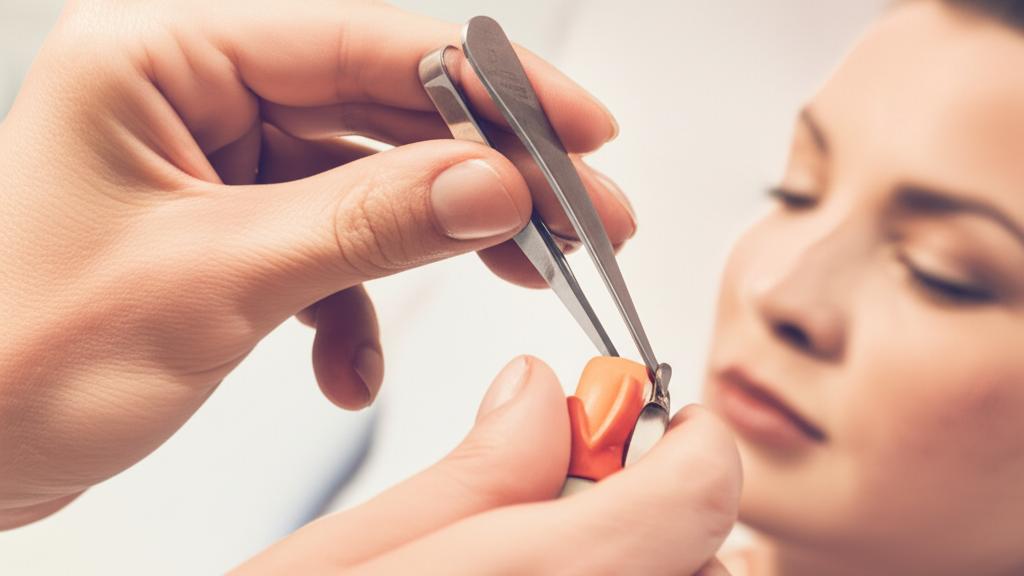You’re sitting in the exam room, maybe waiting to get an IUD placed or for a biopsy. You’re already a little on edge. Then, your doctor mentions they’ll be using a tenaculum. The word itself can sound… well, a little intimidating. I get it completely. Many of my patients tense up when they hear an unfamiliar medical term. So, let’s take a moment to pull back the curtain and talk about what this tool is, why we use it, and what you can expect.
A tenaculum is a small surgical instrument that we use to gently hold onto tissue. Think of it like a very precise pair of tongs or tweezers that gives us a steady hand during a procedure. Its main job is to hold things still, particularly your cervix, so we can perform a procedure safely and accurately.
What Does It Look Like and What Are the Types?
Imagine a long, slender pair of scissors. That’s the basic shape. It has finger holes at one end for control. But instead of blades, the other end has a very small, sharp, or sometimes blunt hook. This little hook is what allows it to grasp tissue securely. Most are made of stainless steel, but you might see medical-grade plastic ones, too.
Not ALL tenaculums are the same. We have different types for different jobs, kind of like having different knives in a kitchen.
| Type of Tenaculum | A Doctor’s Perspective: When We Use It |
|---|---|
| Pozzi Tenaculum | This is my go-to and the most common type. It has a single, sharp hook that gives a really secure grip on the cervix or uterus. |
| Single-Tooth Tenaculum | Similar to the Pozzi, but the hook is a bit straighter and duller. I might choose this for more fragile tissues to be gentler. |
| Double-Tooth Tenaculum | Just as it sounds, it has two hooks. This gives extra grip, which is helpful for thicker tissue or for removing polyps. |
| Allis Tenaculum | This one has a jagged, saw-like edge instead of a hook. It can sometimes cause less bleeding than a hooked tenaculum while still providing a good hold. |
| Cervical Tenaculum | This is specifically designed for the cervix and often has a loop at the end. |
Why Is This Tool Necessary?
The main reason we use a tenaculum is for stabilization. Your cervix can be quite mobile. For procedures that require precision, we need it to stay perfectly still.
Common procedures where a tenaculum is used include:
- Inserting an intrauterine device (IUD): Holding the cervix steady allows us to place the IUD in exactly the right spot in your uterus.
- Performing a biopsy: We need a stable target to take a small tissue sample.
- Hysterectomies: In more complex surgeries, it helps manipulate and hold tissues.
- Tubal ligation: Helps with access and visualization during the procedure.
It can also be used to clamp blood vessels to control bleeding during surgery. It’s a surprisingly versatile little tool.
The Big Question: Does It Hurt?
Let’s be honest, this is what everyone really wants to know. Yes, using a tenaculum can be uncomfortable. To get a good grip, the tip does slightly puncture the very surface of the cervical tissue. Most people describe the sensation as a strong pinch or a sharp cramp that lasts for a few moments.
The good news is that the discomfort is usually brief. If you’re concerned about pain, please talk to us! We can discuss options. Taking an over-the-counter pain reliever like ibuprofen about an hour before your procedure can often help take the edge off.
It’s important to remember that while the pinch from a tenaculum can be uncomfortable, its use makes the overall procedure safer and quicker.
Some patients ask if an IUD can be inserted without a tenaculum. While it’s sometimes possible, most doctors prefer to use it to ensure the IUD is placed correctly, which reduces the risk of it failing or causing problems later. It’s always a conversation worth having with your provider.
A Quick Note on Speculums vs. Tenaculums
It’s easy to mix these up!
- A speculum is the duck-billed instrument we use to gently open the vaginal walls so we can see your cervix. You’ve likely experienced this during a Pap smear.
- A tenaculum is the instrument we use to gently hold your cervix still after we can see it.
They work as a team, but they do very different jobs.
Take-Home Message
- A tenaculum is a surgical tool that looks like long scissors with a small hook at the end.
- Its main job is to gently but firmly hold your cervix still during gynecological procedures like IUD insertions and biopsies.
- Using it can cause a brief, sharp pinch or cramp, but this discomfort helps make the procedure safer and more accurate.
- You can talk to your doctor about taking an over-the-counter pain reliever beforehand to help manage the discomfort.
- It is different from a speculum, which is used to open the vaginal walls for visualization.
Knowing the “what” and “why” behind the tools we use can make a medical procedure feel much less frightening. If you ever have questions, please, always ask. We are here to help you feel safe and informed.
You’re in good hands.


